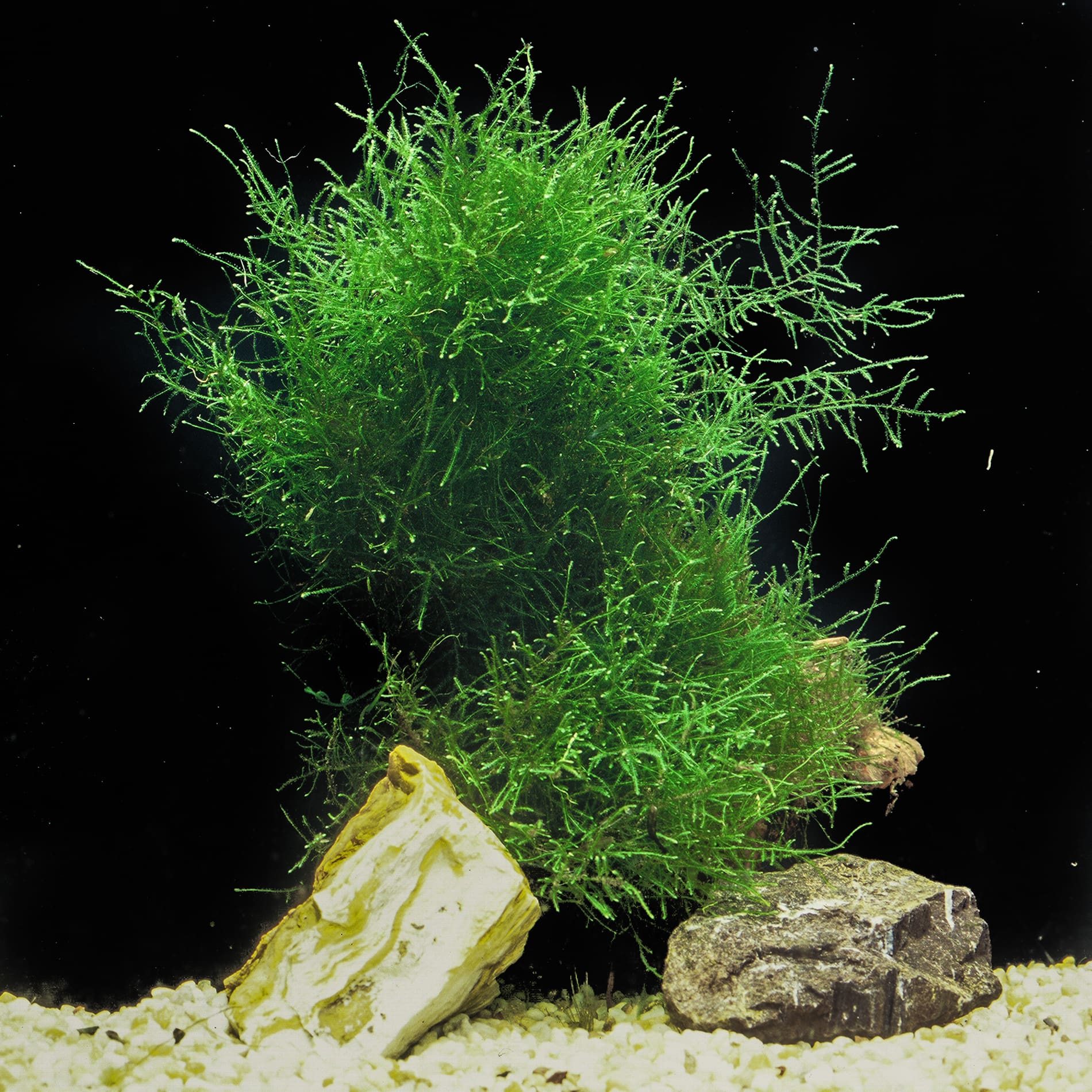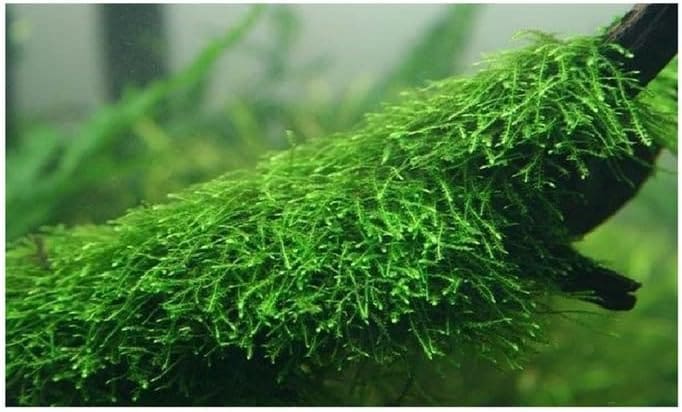Within the realm of aquatic flora, the Taxiphyllum Barbieri is a topic of intense study and discussion. Known colloquially as the Java Moss, this aquatic weed has come to be vital for many within the spheres of aquascaping and the pet trade. Within this article, an exploration is undertaken to shed light on the Taxiphyllum Barbieri, its unique characteristics and properties – and how and why it has become so important in various fields. From its ecological role in its natural habitats to the ways in which you can cultivate it domestically, this article serves as a comprehensive guide to everything you need to understand about this fascinating aquarium plant.

About Taxiphyllum Barbieri
Taxiphyllum Barbieri, a unique specimen among aquatic plants and weeds, possesses intriguing qualities that make it an attractive addition to certain aquatic ecosystems. Known for its widespread distribution and distinctive physical appearance, this plant is often sought after by those interested in aquariums and aquatic sceneries.
Origin and Distribution
Taxiphyllum Barbieri is native to Southeast Asia, although it is now anonymously distributed across the globe due to its popular usage in aquariums. It’s found flourishing in diverse environments, from stagnant water bodies to fast-flowing streams. However, one should bear in mind its invasive potential when distributing it beyond its native region.
Description and Identification
The moss-like Taxiphyllum Barbieri is easily identifiable due to its unique physical attributes. It exhibits a distinctive growth pattern, with small leaves measuring around 2mm, densely clustered on delicate stems trailing downwards and branching outwards. Its green to dark green color crescendos the beauty of an entire aquatic ecosystem.
Common Names
Taxiphyllum Barbieri is often referred to by common names such as Java Moss and Singapore Moss. These names not only indicate its place of origin but also its striking moss-like appearance.
Habitat and Growth Requirements
Like any other plant species, Taxiphyllum Barbieri has specific growth requirements that ensure its survival and proliferation. An understanding of these requirements is essential for anyone intending to cultivate this plant.
Water Conditions
Taxiphyllum Barbieri is relatively adaptable to various water conditions. It can thrive in a wide pH range (5.0-8.0) and shows a high tolerance for hard water.
Light Requirements
While this aquatic weed can survive under low light conditions, moderate to high light intensity is ideal for its optimal growth. However, excessive light may stimulate unwanted algal growth.
Temperature Tolerance
Taxiphyllum Barbieri is a resilient species with impressive temperature tolerance; it can withstand temperatures between 21 to 24°C, although it can survive within a wider range if necessary.
Substrate Preferences
Taxiphyllum Barbieri’s versatile nature enables it to grow on just about any surface, including rocks, driftwood, and other aquatic plants, as long as the surface provides sufficient anchor points.

Roles in Aquatic Ecosystems
Despite its classification as a weed, Taxiphyllum Barbieri fulfills several essential roles in aquatic ecosystems.
Shelter and Breeding Ground
Providing a safe haven for many aquatic species, this plant serves as a vital shelter and breeding ground. Fish and shrimp, in particular, find its dense growth conducive for spawning.
Water Quality Enhancement
Taxiphyllum Barbieri contributes to water quality improvement by absorbing excess nutrients, thereby reducing the risk of harmful algal blooms.
Food Source for Aquatic Life
It also serves as a significant food source for several aquatic organisms. Herbivorous animals, notably shrimp and certain fish species, often graze on these plants.
Possibilities for Indoor and Outdoor Cultivation
Taxiphyllum Barbieri’s versatility is observable in its ability to be cultivated both indoors and outdoors under monitored conditions.
Outdoor Ponds and Water Gardens
This attractive aquatic plant can add visual appeal to outdoor ponds and water gardens, where it can grow freely, adding a vibrant green landscape.
Indoor Aquariums and Terrariums
For indoor aquariums and terrariums, the Taxiphyllum Barbieri can provide an intricate, beautiful green backdrop. This can lead to an entire rustic, underwater visual spectacle in a range of controlled settings.
Cultivation Challenges
Regardless of this plant’s resiliency, cultivators should be cognizant of potential challenges, including maintaining ideal water parameters, controlling its rapid growth, and preventing potential invasions into aquatic ecosystems.

Propagation Methods
An understanding of the propagation methods of Taxiphyllum Barbieri is essential for sustainable and controlled cultivation.
Vegetative Propagation
The most common method of propagation is vegetative, where new plants sprout from fragments of the parent plant. This is predominantly how this plant proliferates in nature.
Sexual Reproduction
Though less common, Taxiphyllum Barbieri can also reproduce sexually. After sporulation, the spores settle on an appropriate substrate to germinate and grow into a new plant.
Propagation Challenges
While seemingly simple, propagation of this aquatic weed can present challenges, like managing its excessive growth rate and preventing uncontrolled spread.
Uses in Aquascaping
This plant’s versatility extends to its usefulness in aquascaping, where it provides both functional and aesthetic benefits.
Creating Natural Landscapes
With its vibrant green hue and lush growth, Taxiphyllum Barbieri can create surreal natural landscapes, replicating miniature aquatic forests.
Exemplary Aquatic Arrangements
The plant’s distinct structure and patterns can enhance any underwater arrangement, contributing depth and complexity to aquatic themes.
Assistance in Algae Control
Furthermore, by absorbing excess nutrients, Taxiphyllum Barbieri aids in algae control, enhancing the delicacy of the entire display.

Potential Hazards and Invasive Nature
Despite numerous benefits, Taxiphyllum Barbieri possesses the potential for harm, particularly when introduced into non-native ecosystems.
Disruption in Eco-Balance
Due to its rapid growth and propagation capabilities, it may overtake available spaces, disrupt habitats and potentially upset ecological balance.
Threat to Native Aquatic Species
The excessive growth of this plant could potentially outcompete native aquatic species for resources, thereby threatening their survival.
Regulatory Constraints
Considering its invasive potential, certain jurisdictions have regulations in place for the cultivation and distribution of Taxiphyllum Barbieri.
Management and Control Methods
Efficient management and control methods are needed to curb the invasive potential of Taxiphyllum Barbieri.
Physical Methods
Physical removal is a common method to manage its growth, although it might not be entirely effective given the plant’s reproductive capabilities.
Chemical Methods
Herbicides can also be used to control growth. However, it’s crucial to ensure the compatibility of selected chemicals with other aquatic life.
Biological Control
Deploying biological controls like herbivorous fish and crustaceans that feed on this plant is another effective management method.

Taxiphyllum Barbieri in Research
This plant is increasingly featured in research owing to its eco-toxicology implications and as a model for aquatic investigations.
Importance in Eco-toxicogical Studies
Taxiphyllum Barbieri acts as a bio-indicator of aquatic ecosystems’ health, making it a valuable player in eco-toxicological studies.
Use in Aquatic Experimental Models
Given its rapid growth and reproducing mechanism, researchers frequently use it as an experimental model in aquatic biology.
Interesting Facts About Taxiphyllum Barbieri
The intrigue of Taxiphyllum Barbieri surpasses its physical characteristics and ecological roles.
Cultural Significance
While primarily valued for its aesthetics in aquascaping, it is sometimes given as a token of good luck in certain cultures.
Scientific Studies and Discoveries
Recent studies have shown that this plant’s unique properties can potentially be applied in bio-remediation, hinting at an extensive field of scientific exploration.
In conclusion, the aquatic plant Taxiphyllum Barbieri presents a fascinating blend of unique characteristics, ecological roles, and potential risks. Nurturing this plant necessitates an understanding of its nature and propagation while being mindful of its invasive potential.